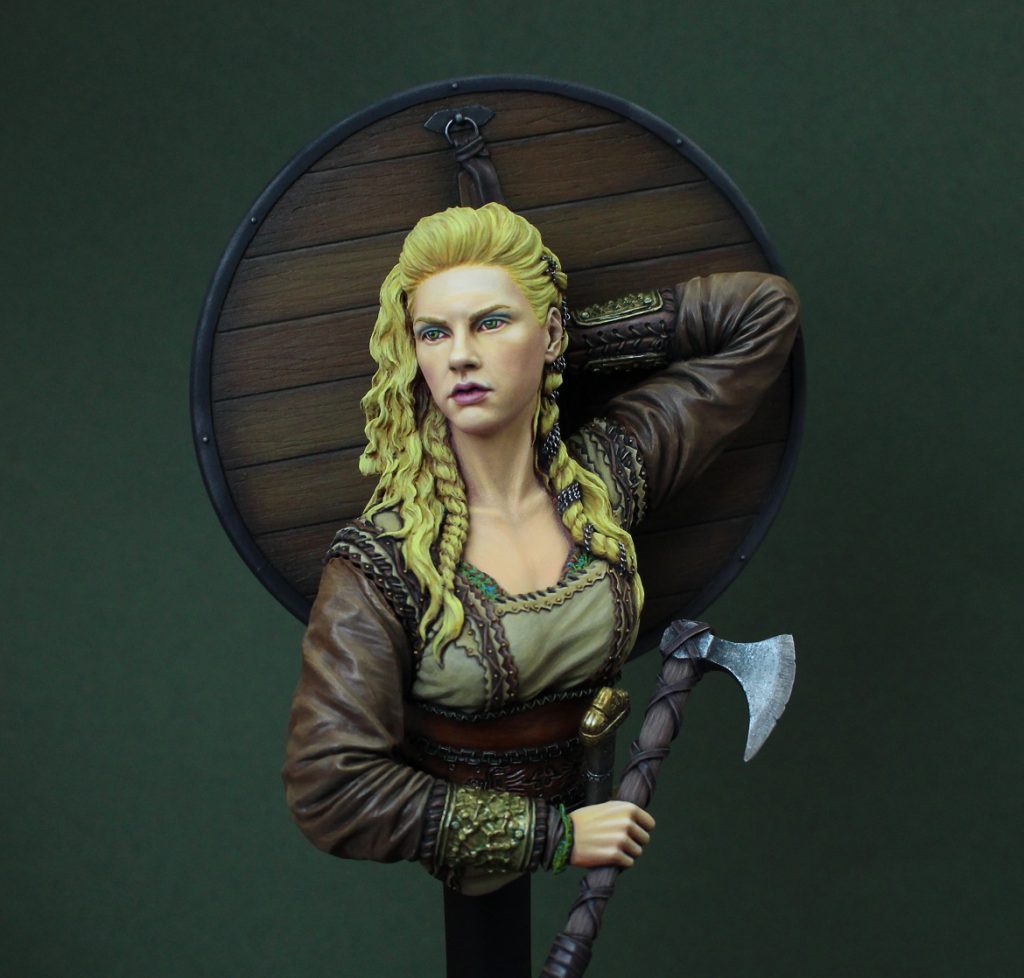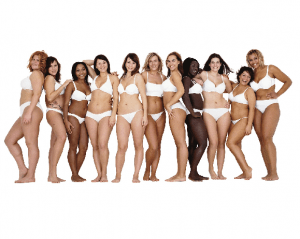Fierce Viking Age warriors rampaged, warred, and plundered throughout northern Europe and the northern Atlantic from the ninth until the eleventh century. Until recently most scholars assumed Viking military forces were entirely male. However, this is an inaccurate over-generalization as new evidence suggests that female warriors were included on the battlefield. Twenty-first century archaeological technology and DNA testing expanded available information to provide crucial missing pieces to the fabric of history. Vikings recognized women who fought and died beside their brothers-in-arms.
During the Viking Age, Scandinavia was not one politically cohesive area but its people did share religious beliefs, domestic lifestyle, trade, and warfare tactics. Viking life was harsh compared to other societies at the time. There is no evidence of large-scale sophisticated cities. Instead the region’s people settled into relatively isolated farming communities and trading posts, as the geography allowed.1 These conditions made land a valuable commodity, and, at times, men and women raided beyond their homelands to obtain it. Long winters and arduous terrain limited the Vikings’ agricultural cultivation opportunities. If a community was to thrive, every able-bodied person would have been required to work what fertile farmland could be found.
Possibly due to this dynamic, Viking women held higher social and legal statuses compared to women in many simultaneous societies worldwide. Women could initiate divorce and independently own property.2 Instead of a simple divide between male and female genders, “the fault line runs between the able-bodied men and exceptional women on one hand and, on the other, a kind of rainbow coalition of everyone else (most women, children, slaves, and old, disabled, or otherwise disenfranchised men).”3 Capable women received equal treatment to that of men, which could have included training with weapons and in battlefield tactics. These skills would have been valuable in raids, which were a common Viking practice. In fact, a Viking’s personal wealth was generally amassed through foreign raids, which were organized by private individuals who could afford to do so. Thus, displays of foreign-acquired wealth were the primary status symbols in Viking society.

One such status symbol, a large, natural stone was acquired by a Viking woman who later commissioned it as a runestone grave marker for her husband.4 The stone was erected in the farmlands of Alstad, Norway with the inscription “Jorunn raised this stone after…, who had her to wife and [she] brought [it, i.e. the stone] from Ringerike, out of Ulvoya. And the stone shall honor them both.”5 Ulvoya is an island located over one hundred kilometers Southwest of Alstad. The logistics required to traffic a large stone over the water and over a large distance of mountainous land suggests that the stone was a prized acquisition, possibly a conquest trophy. Runestone grave markers were not a common practice in Viking Era Norway, and only thirty-eight runestones are archived within its modern borders.6 The female commissioner of the Alstad Stone made a point to commemorate how she obtained and transported the stone from elsewhere. The stone’s acquisition, and the owner’s financial ability to commission the uncommon memorial, indicates that she was a wealthy woman. With this runestone, the widow Jurunn simultaneously honored both her husband’s memory and her own conquests.
In addition to transportable wealth, Viking warriors claimed land as spoils of war. The Vikings established modern-day Iceland’s first colonies. However, the Vikings who colonized the island could not have known the land mass was unsettled, and they must have been prepared to suppress a local population by military force. Written records indicate that the first colony in Iceland had four hundred original land claimants, thirteen of whom were women. This number does not include women who were listed under their husbands’ or brothers’ names on land claims. These thirteen women were listed independently from any man.7 This fact indicates that there were women included on this voyage who were prepared to fight side by side with the men and that these women took their share of the plunder in land claims.

Further evidence of female warriors was discovered in Repton, England. The Anglo-Saxon Chronicles record that a great Viking army occupied the parish Repton in 873-74 A.D. and assumed complete authority over the land. A 1980s Repton excavation of the church discovered a mass burial mound that contained bones of at least 264 Vikings. Close examinations of left femur and mandible sizes compared with approximate biological age demonstrate up to twenty percent of remains were female. The mass graves contained Viking burial goods, and the skeletal remains frequently show signs of violent injuries.8 It is reasonable to conclude these men and women fought and died together. Bodies of Viking warriors slain in battle were afforded the honor of burial even on foreign soil. “The bodies of their own dead, which must be left behind, the Scandinavians carefully buried upon the field of battle; but they displayed their scorn and contempt for the vanquished enemy by leaving the dead comrades of the latter unburied where they fell”.9 These Viking burial rights on foreign soil preserved the battlefield aftermath and provide additional historical context into who fought and died.
The Rempton excavation analyzed Viking remains utilizing multiple twenty-first century technologies. Prior to these developments scholars generally determined gender based on grave goods. If an individual was buried with weapons or agricultural equipment, the remains were male. Conversely, if an individual was buried alongside domestic objects, such as keys or jewelry metal brooches, scientists believed the grave held female remains.10 However, more recent excavations revealed the capability for a woman to be buried with military weapons.
The most prominent example to date comes from the coastal trading post of modern day Birka, Sweden which upended the very core of academic Viking Era knowledge. There are 3,000 graves in proximity to Birka, over 1,100 have been excavated to various degrees; but one grave, designated Bj 581, held the power and evidence to solidify what was previously only speculation and educated guesswork.11 “The grave goods include a sword, an axe, a spear, armour-piercing arrows, a battle knife, two shields, and two horses, one mare and one stallion; thus, the complete equipment of a professional warrior.”12

DNA samples were extracted from a canine and femur bone of Bj 581’s human remains and processed at the Archaeological Research Laboratory, Stockholm University. Genome-wide sequence data was produced to provide better insight into who was buried. Mitochondrial DNA was isolated, and the results of sex chromosomes analysis concluded “…that Bj 581 was a female”.13 Additionally, analysis performed on extracted molars were compared against other Birka graves attributed to the same time period and tested for possible geographical origins. “The strontium isotope values in three teeth could suggest mobility in her early years. The Sr ratio falls outside of the local baseline for the established Birka population, suggesting that this individual moved there later in life.”14
Bj 581’s test results have cultural and historical implications of a far-traveled Viking era woman buried with traditional warrior grave goods. Multiple weapons included with the rare presence of horses is generally agreed as indicative to a high-ranked warrior. Twenty-first century research has confirmed this military grave belonged to a woman, it is necessary to rethink what is Viking Age common knowledge and the period’s gender roles.15 There is now genetic proof of at least one Viking Age woman warrior buried with high military distinction. Bj 581’s existence adds to the probability that other Viking Age women were participated directly in combat.
The two hundred year Viking Age was a unique period in history. An individual’s worth and status were determined by contribution and ability, not solely predetermined by biological gender. For the warlike Vikings, if a woman had the ability and inclination to bare a sword and fight alongside men, she may have been afforded the opportunity to do so. The Viking woman warrior has carved her place in history, and our historical perspectives must be adjusted to correctly include women into what constitutes a Viking warrior. These brave women earned a place within their society and our military history, and we need to recognize what it was.
- Mary Williams, Social Scandinavia in the Viking Age (New York: The Macmillan Company, 1920), 243. ↵
- Ross Samson, Social Approaches to Viking Studies (Glasgow: Cruithne Press, 1991), 66,70. ↵
- Carol Clover, “Regardless of Sex: Men, Women, and Power in Early Northern Europe,” Speculum 68, no. 2 (1993): 363-87, accessed June 1, 2019, https://doi.org/10.2307/2864557. ↵
- Alstad Stone, Museum of Cultural History, no. 61, Oslo, Norway. ↵
- Judith Jesch, Women in the Viking Age (Woodbridge: The Boydell Press, 1991), 70-71. ↵
- Judith Jesch, Women in the Viking Age (Woodbridge: The Boydell Press, 1991), 70. ↵
- Judith Jesch, Women in the Viking Age (Woodbridge: The Boydell Press, 1991), 81-82. ↵
- James Graham-Campbell et al., Vikings and the Danelaw (Oxbow Books, 2016), 45. ↵
- Mary Williams, Social Scandinavia in the Viking Age (New York: The Macmillan Company, 1920), 268. ↵
- Judith Jesch, Women in the Viking Age (Woodbridge: The Boydell Press, 1991), 13. ↵
- Nils Ringstedt, “The Birka Chamber-Graves- Economic and Social Aspects,” Current Swedish Archaeology 5, no. 20 (1997): 127. ↵
- Charlotte Hedenstierna-Jonson et al., “A Female Viking Warrior Confirmed by Genomics,” American Journal of Physical Anthropology 164, no. 4 (2017): 854. ↵
- Pontus Skoglund, Jan Stora, Anders Gotherstrom, & Mattias Jakobsson, “Accurate Sex Identification of Ancient Human Remains Using DNA Shotgun Sequencing,” Journal of Archaeological Science 40, no. 12 (2013): 4477-82. ↵
- Charlotte Hedenstierna-Jonson et al., “A Female Viking Warrior Confirmed by Genomics,” American Journal of Physical Anthropology 164, no. 4 (2017): 857. ↵
- Pontus Skoglund, Jan Stora, Anders Gotherstrom, & Mattias Jakobsson, “Accurate Sex Identification of Ancient Human Remains Using DNA Shotgun Sequencing,” Journal of Archaeological Science 40, no. 12 (2013): 4477-82. ↵



56 comments
Todd Brauckmiller Jr.
Now an article like this really sends a very powerful message to the people of today’s world. When looking back at history, women had been treated very poorly and unfairly during those early times of civilization. So with information like female viking warriors it shows to us progression had been made. If that warrior fought hard, strong, and died along her brother in arms they were seen with high levels of respect with those who lived on. What really caught my attention was the way they buried their dead. Being able to tell the difference in gender based on the gifts that were left for them at their graves is a very fascinating detail. This was a very well told article and I think more people should learn about the parts of history we don’t get to hear very often.
Doan Mai
The article was so compelling. I know that sexism has existed since a long time ago, and the idea that only man can be capable of handling the war that man is the one who can be a breadwinner had spread throughout the world. However, the article has shown me that in the Vikings culture, women also fought along with men.
Felipe Macias
This reminds me of the ladies in World War II who each had twenty plus confirmed kills each. It is not that women cannot operate like men in war, most of the time they are not acknowledged or disguised in order to act for the war effort. Women are extreme, and having a number of menacing blood-thirsty women after anyone is a terrifying thought.
D'Hannah Duran
This article was so informative! I would never have known that the Viking women we allowed to hold the same power of men because it was based on what they could do not by their gender. To think we have advanced so far for us to be able to determine that both men and women fought side by side. I am glad that they gave women the opportunity to prove themselves, through showing how tough they could be. Great article!
Nelly Perez
I knew there were Vikings at the time, but I didn’t know women were able to fight in combat alongside them. We always developed the idea that men were Vikings and the women were on the supportive side. Thanks to this article, this opened up eyes for readers to see the truth. Women really dominated the scene in different ways. Women got to be independent on their own.
Roberto Rodriguez
It was really interesting to learn the gender equality among a culture that will be remembered as “savages” for the most part (which is somewhat true). It really makes you wonder why other cultures did not have the same concept of equality as the vikings. What really made them think differently than other more “civilized ” cultures at the time? Why did other cultures not believe in women? I was very shocked to hear about woman as warriors, just because of the stereotypes surrounding all the different “war-based cultures”, especially since the vikings are infamous for being one of those cultures.
Annissa Noblejas
The belief “women are for the home” was deeply instilled in many religions and cultures. As a result, women were not allowed to prove their worth on the battlefield. This concept is evolving, but slowly.
Mia Correa
I think this is incredibly interesting. I’ve never heard of women viking warriors before, and this intrigues me because there used to be so much sexism at that Time (or so I thought), so the idea that women were allowed to partake in the wars and battles surprises me. It makes me question, if women were allowed to fight in battles and wars, how come there is so much sexism about women needing to stay home and cook and clean while the men are off at war?
Annissa Noblejas
Gender-based bias has always been alive and well throughout the world. While men are not capable of bearing children, women are capable of warfare.
Kathryn Martinez
I thoroughly enjoyed this article and was excited to hear there was possible forensic evidence of female Vikings during this time period. It is so interesting to run parallels between their society and modern today as we know it. It could be argued that the Vikings’ various societies can be in fact socially more advanced in regards to woman involvement, especially in developing countries.
Paul Garza
Pretty cool to know that in viking culture, women made a name for themselves apart from the men. I find that pretty interesting because in almost all of the ancient cultures, women were not represented or treated fairly. Im pretty sure the conditions for women weren’t the best in the time of the viking but to know that they were able to train and fight in battle along side the men is big for women all over the world. I like when the author talks about Iceland and women who traveled with intentions to go into battle were able to claim their own riches/ land just like the men. This further shows the world that women can do anything a man can do!
Joanna Martinez
Awesome Article!! I appreciate the topic of women and our ability to be equal to men. when I think if the Viking period, I immediately think of men, so to read an entire article on the strength and intelligence of women during the era is enlighting. Ironically, people characterize Vikings as borderline Barbaric considering their “modern” mentalities. The Vikings focused solely on strength instead of gender which allowed the women to obtain such important roles in their civilization.